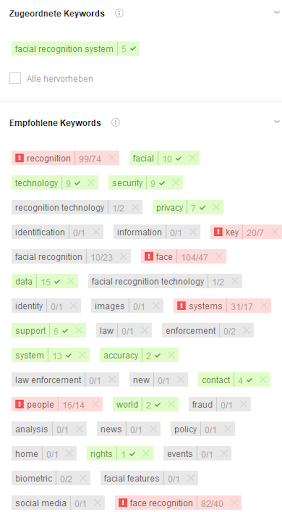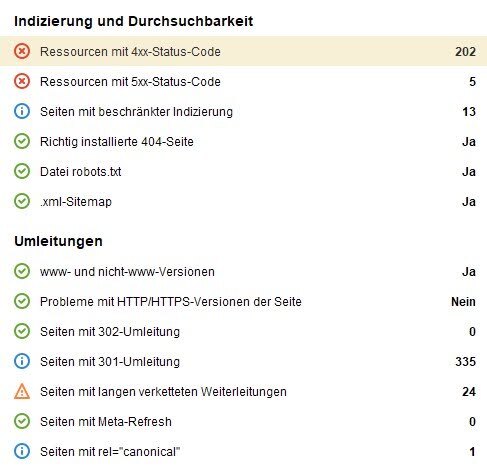2249
•
14-minute read


Is it challenging to rank a brand new website in a tough niche? It depends on the approach, but one thing's for sure – success in SEO doesn't happen overnight.
In this case study, you'll learn how Christopher Hüneke, founder of ChriSEO, helped a brand new AI cybersecurity startup gain a strong presence in a competitive field. Using a targeted SEO strategy, Christopher boosted the startup's visibility by 75% and increased revenue from zero to $150K a month – all within just half a year.
Christopher Hüneke has been in the SEO world for over ten years and still finds it as exciting as day one. As the founder of ChriSEO, based in Mannheim, Germany, he's worked with clients of all sizes, from small businesses to well-known brands like 888.com and Mercedes-AMG.
Today, Christopher leads a team of SEO pros dedicated to making businesses more visible and successful. He often relies on SEO PowerSuite tools while working on his projects, as the software provides the necessary insights to get the job done.
Hi, I'm Christopher, and this is a story I'm particularly proud to share. When a US-based AI cybersecurity startup came to me, they had a brilliant product – a facial recognition system for smart door locks – but no real traction. Despite an $8 million investment, traditional marketing strategies like paid ads and cold calling weren't working, and they were getting lost in a highly competitive market. That's where my agency stepped in.
The AI cybersecurity space is extremely competitive, and this startup needed more than just small changes – they needed a strong SEO strategy to stand out and overtake competitors already ranking in search results.
In the US market, the challenge was even tougher. With well-established companies controlling the search rankings and new technology constantly changing, we had to stay flexible and adjust to the latest trends and search updates.
It was essential to develop a plan that would increase search rankings and make them a go-to authority in the AI cybersecurity world. Of course, describing an entire SEO campaign would take more than a single article, so I’ve tried to outline those steps that have had the biggest impact on the project results.
Let’s dive in!
First, I analyzed the keywords the website was already ranking for in the top 100 results. Although they had visibility, many of these keywords weren’t bringing in much traffic.
To address this, I used Rank Tracker to reorganize these keywords into content clusters, grouping them by related topics.

This strategy laid the foundation for building topical authority, which is crucial in the competitive AI cybersecurity space.
Once we formed the initial clusters, I knew we had to go beyond what they were already ranking for. I used Rank Tracker to discover additional keywords, focusing on those relevant to the target audience.
We weren’t just looking for keywords with high search volume – we wanted terms that reflected what potential customers were searching for.
Next, it was time to get inside the minds of the target audience. I used the Related Questions tool from Rank Tracker to uncover the questions people were asking most often.
This step is essential because it allows us to create content that addresses real concerns and aligns with user intent. By doing this, I could ensure that the content we created not only ranked well but also resonated with users.
To make sure we covered the full scope of the topic, I used Rank Tracker’s TF-IDF tool. This helped me identify semantically related terms that could boost the site’s topical relevance.
By incorporating these keywords into the content, we strengthened the website’s ability to rank not just for specific keywords, but for broader topics. In the long run, this helps build stronger authority in the niche.
Initially, we targeted low-volume keywords to gain quick traction, but it became clear we needed to aim higher. I shifted our focus to competitive, high-value terms that would drive real growth.

At the same time, I didn’t ignore the power of long-tail keywords. These less competitive, niche-specific queries helped us capture targeted traffic and broaden the site’s visibility.

By combining both approaches, we were able to build authority while securing quick wins, making the strategy even more effective.
Once the keywords were in place, it was time to create content that Google would love – and, more importantly, that users would find valuable. I built landing pages around the main topics, like "facial recognition system," and then created pillar pages that went deeper into subtopics related to the main keyword.

We structured these pages using a topical map, ensuring every angle of the topic was covered. These pillar pages were then strategically linked to each other, forming a solid internal linking structure that boosted both SEO and user experience.
Internal linking is often overlooked, but it’s one of the most powerful tools in building topical authority.
By linking all related content back to the main landing pages, we showed Google that these pages were the core of the site’s content. Optimized internal linking highlighted the content's topical value and made it easier for users to navigate the site and find relevant information.
In 2024, simply targeting keywords isn’t enough, as search engines now seek broader, semantically rich content. This means covering entire topics, not just stuffing pages with keywords. So, when optimizing the facial recognition system landing page, for example, I didn’t just focus on the phrase "face recognition." I needed to ensure we covered related concepts like "biometric security," "fraud prevention," and "identity verification."
This is where Website Auditor’s TF-IDF tool came into play. It helped me analyze the top competitors' content to see which terms they were using that we hadn’t yet incorporated.
Think of it like making sure we’re not just talking about "French fries" but also mentioning "potatoes" and "ketchup" – even if they aren’t direct matches, they’re important to fully cover the topic. Using TF-IDF ensures we don’t miss these related terms, and it gives our content the authority it needs to rank well.
Once we identified the necessary semantic terms, I used Website Auditor’s Content Editor to fine-tune every page. For example, on the facial recognition system page, we reduced instances of overused terms like “face recognition,” replacing them with better alternatives like “facial recognition.”

We also added important terms like “biometric,” “identity,” and “fraud” to cover the topic thoroughly.

This balance of keyword frequency and semantic relevance gave the content the depth and variety needed to rank higher and serve user intent more effectively.
No SEO strategy is complete without addressing the technical foundation of the website. During the audit, I found several 404 errors and long redirect chains that were hurting the site's performance. We redirected the 404s to relevant working pages and fixed the internal links to ensure there were no dead ends.
Again, this helped with SEO and user experience, as visitors no longer hit broken links or got lost in unnecessary redirects.

I also checked for non-indexed pages, ensuring everything important was being crawled and indexed by Google. These basic but essential technical fixes played a big role in improving the site's overall performance.
When it comes to link building, quality always beats quantity. For this project, I used SEO SpyGlass to analyze competitors' backlink profiles and launch a targeted outreach campaign.
Instead of trying to build thousands of backlinks, we focused on generating fewer links from high-authority, industry-relevant sources. This helped us grow the site’s authority in a way that felt natural to search engines.
One of the most useful tools here was SEO SpyGlass’s bulk backlink checker, which let me quickly get an overview of the competitors' backlinks and identify opportunities.
Searching for backlinks in a niche like AI cybersecurity is tough, but a deep analysis of competitors' links helped us bridge the gap.
Bonus link-building tip: CustomGPT hack outreach
As you know, link outreach can be time-consuming and tedious, with no guaranteed results. That’s why it’s important to get creative and find ways to work smarter, not harder :)
For this project, we took a particularly unique approach to link building, which I called the “CustomGPT Hack”. We identified publicly listed CustomGPTs from the GPT Store and AI-related websites and developed a highly targeted outreach campaign around security vulnerabilities.
By demonstrating how these GPTs could be hacked and offering security recommendations, we were able to generate over 100,000 high-quality backlinks from 35,000 domains.
By combining all these strategies – semantic keyword optimization, content structure improvements, technical SEO fixes, and creative link-building tactics – I helped the startup achieve sustainable growth.
The results were amazing, even to me:
Maybe the most rewarding outcome? They didn’t just increase traffic and revenue – they became a recognized leader in their industry and were eventually acquired by a larger company on excellent terms.
Every new SEO project brings valuable insights that can be applied in the future. After completing this one, here are the key takeaways I’d emphasize:
This was one of those projects that reminded me why I love what I do: helping a startup break through in such a competitive market was an incredibly rewarding experience. It goes to show that with the right SEO tools and a thoughtful strategy, even the toughest markets can be cracked.





